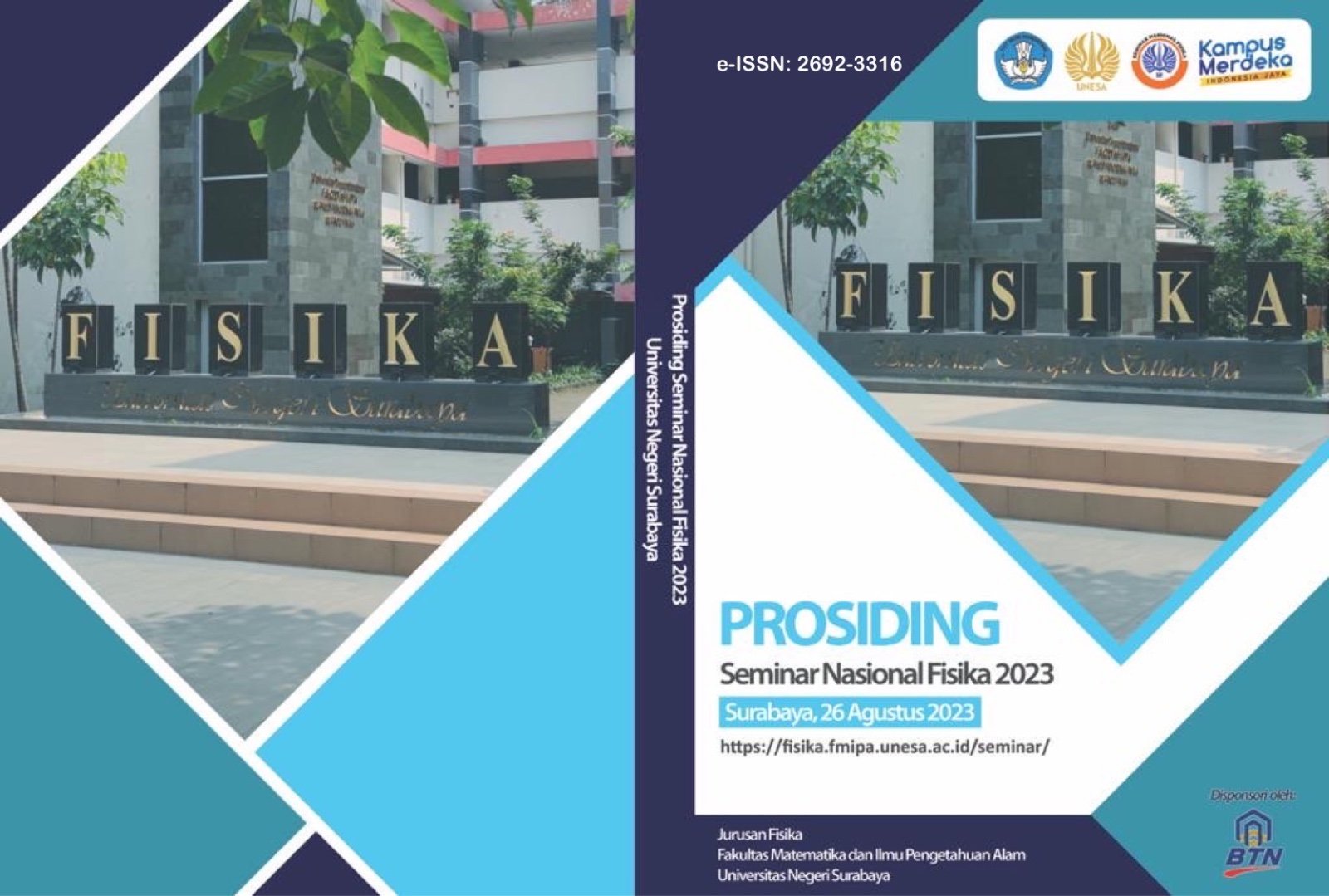Neutron Irradiation Based Radioisotopes Production Chance using Secondary Neutron Irradiation in DECY-13 Cyclotron
Abstract
The research of neutron-based radioisotopes that is using research reactor as irradiation facility still popular in Indonesia. However, the scarcity from Uranium Fuel is a problem that will be faced in future. The proposed solution is used the accelerators to produce radioisotope. DECY-13 is a cyclotron type accelerator that accelerates Proton to 13 MEV. To produced neutron, the accelerated Proton must be interacted with particles that can induce neutrons such as lithium, beryllium, or titanium which is named secondary neutron. Monte Carlo method on PHITS program was used to simulate the result of secondary neutron. DECY-13 cyclotron was able to produced secondary neutron from induced reaction of lithium, beryllium, or titanium. The neutron flux results were 1.463x1012, 4.023x1012, 3.638x1012 neutron.cm-2.s-1, respectively. The secondary neutron result from DECY-13 was lowest than Indonesian research reactor, it’s made the radioactivity result less optimal than using research reactor. In conclusion, the secondary neutron induced by 13 MeV proton in DECY-13 cyclotron was not feasible to produced common radioisotopes like 99mTc, 131I, and 32P. However, there was an opportunity to make radioisotopes with high neutron cross section for industrial purpose like Scandium-46.

